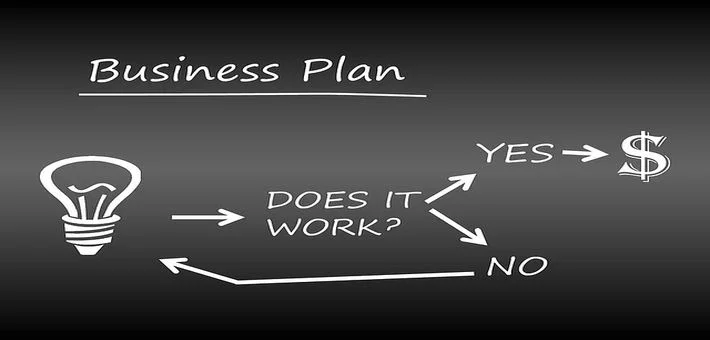More MCQs
HOME
» MCQs on Nature and Scope of Strategic Management
» MCQs on Strategy Introduction its Levels and Concepts
» MCQs on General and Competitive environment
» Business strategy and strategy development MCQs
» MCQs on Stakeholders and corporate objectives
» Strategic Decision Making MCQs
» MCQs on Resource Audit
» MCQs on Generic strategies
» MCQs Directions and methods of growth
» MCQs on Evaluating Strategic Options
» Strategic Marketing MCQs
» MCQs on Information systems and strategy
» MCQs on Issues in strategic management
» MCQs on Organizational change
» MCQs on Implementing change
Strategic Decision Making MCQs
Strategies are developed in order to achieve desired outcomes. These desired outcomes are inherent in the organisation’s mission and vision. Here on MCQs.CLUB we have prepared easy Multiple-Choice Questions (MCQs) on Strategic decision making that fully cover MCQs strategic decision-making process with definition and characteristics, meaning and examples, the approaches, various frameworks used in and types of strategic decisions such as tactical decision with example, strategic business decisions examples. These effective MCQs with answers on strategy and decision making are also useful for competitive exams, business management exams and professional accountancy exams.
- An important part of developing a strategy is analysing an organisation’s position in relation to its external environment, in order to ensure that the proposed strategy fits with the environment.
- True
- False
- Which of the following is correct?
- The environment within which organisations operate influences what they do, and their ability to survive and grow.
- The external environment is the source of opportunities and threats for an organization.
- Both A&B
- None
- Which of the following is correct?
- The General Environment (or macro-environment) covers all the political/legal, economic, social/cultural and technological (PEST) forces which affect not only individual organisations but also the other actors in the micro-environment.
- The Task Environment (or micro-environment) relates to the factors in an organisation’s immediate environment, which affect its ability to operate effectively in its chosen markets, such as customers, competitors, customers, distributors and suppliers.
- Both A&B
- None
- Which of the following is NOT suggested by Porter in his “Porter’s five forces model”?
- The threat of new entrants to the industry
- The threat of substitute products or services
- The bargaining power of customers
- The bargaining power of suppliers
- The rivalry among current competitors in the industry
- (I) and (IV) only
- (II) and (V) only
- All of the above
- None
- The bargaining power of customers depends on:
- How critical the product is to the customer’s own business
- Customer’s ability to bypass the supplier or take over the supplier
- The skills of the customer’s purchasing staff, or price-awareness of customers
- All of the above
- The bargaining power of suppliers depends on:
- The threat of new entrants or substitute products to the supplier’s industry
- Whether switching costs for customers would be high
- The number of customers in the industry
- All of the above
- The intensity of competitive rivalry within an industry will affect the profitability of the industry as a whole. Rivalry levels are affected by:
- Market structure – Markets in which a number of competitors are roughly the same size are likely to have more intensive rivalry than, for example, a monopoly market
- Uncertainty about competitors’ strategy. There is a tendency to respond to uncertainty by formulating a more competitive strategy
- Cost structure – If fixed costs are high, firms may be tempted to compete on price. In the short term, any contribution to profit (to help cover fixed costs) is better than none at all
- All of the above
- An individual firm can earn better margins that its competitors in an industry if it can deal more effectively with key forces, or if it can develop some distinctive competences which provide it with a sustainable competitive advantage in relation to its competitors.
- The above statement is correct
- The above statement is incorrect
- Competitor Analysis – is the ‘identification and quantification of the relative strengths and weaknesses (compared with competitors or potential competitors), which could be of significance in the development of a successful competitive strategy’.
- The above definition is correct
- The above definition is incorrect
- Once an organisation has analysed its competitors, it can then begin to assess their likely response to its strategies or tactics. Identify the types of competitor response.
- Retaliatory (or ‘Tiger’) – competitor reacts and responds aggressively to any attack.
- Unpredictable (or ‘Stochastic’) – impossible to predict how competitor will react. Sometimes they will react aggressively, other times they will not respond at all.
- Laid-back – competitor does not respond, even though it has seen and recognised your move.
- All of the above
- An organisation’s response to its environment is influenced by environmental complexity and its dynamism. These factors also affect an organisation’s ability to make long-term forecasts and plans about the future with any certainty.
- The above statement is correct
- The above statement is incorrect
- Strategies are developed in conditions of uncertainty and partial ignorance. The environment is a major cause of such ‘ignorance’ because:
- It contains opportunities and threats which may influence the organisation’s activities and may even threaten its existence.
- The environment is sometimes so varied that many organisations will find it difficult to discern its effects on them.
- Firms can conduct audits to identify which of the many different sorts of environmental factors (PEST; Porter’s five forces) have had a significant influence.
- All of the above
- One way of identifying the environmental factors which have significant influences on an organisation’s development, or its performance in the past, is by conducting an audit of environmental influences.
- The above statement is correct
- The above statement is incorrect
- If an organisation is operating in a highly uncertain environment, this affect its strategy, impacting:
- The planning horizon will be shortened
- Emergent strategies may be encouraged, instead of planned strategies
- Strategies may be more conservative because management are unlikely to risk anything new.
- All of the above
- Options theory can be applied to strategic decisions. There are common types of ‘real option’ which are relevant to strategic projects. What are such options:
- the option to make follow-on investments
- the option to abandon a project
- the option to wait
- All of the above
- Which of the following is correct?
- Traditional net present value (NPV) analysis means that an organisation will invest in a project if it makes a positive return on the initial investment for that project.
- Many strategic projects involve a significant capital investment up front. If the subsequent revenue streams from the project are highly uncertain, the option to abandon the project if things go wrong would be very valuable to an organisation.
- An organisation may opt to ‘wait and see’ before making a decision in the expectation of gaining more relevant information which will help inform its decision.
- All of the above
- Which of the following is correct?
- If there is a very high degree of uncertainty surrounding a project, the more valuable the option will be, but equally the higher the cost of the option.
- The length of the option will affect its value to a business. A longer option will be more valuable than a shorter one, because it provides more opportunity for evaluating different outcomes.
- The value of an ‘option to wait’ will be higher when interest rates are high, because the firm benefits more from delaying its initial investment expenditure.
- All of the above
- Which of the following is correct regarding “Gap Analysis”?
- Gap analysis quantifies the size of the gap between the objective for the planning period and the forecast based on the extrapolation of the current situation, and current prospects.
- Gap analysis is a ‘comparison between an entity’s ultimate objective and the expected performance from projects, both planned and under way, identifying means by which identified difference or gap might be filled.’
- Both A&B
- None
- Planning Gap –
- The planning gap is not the gap between the current position of the organisation and the desired future position.
- It is the gap between the position forecast from continuing with current activities, and the desired future position.
- Both A&B
- None
- Gap analysis is based on questions such as:
- What are the organisation’s targets for achievement over the planning period?
- What would the organisation be expected to achieve if it ‘did nothing’.
- Both A&B
- None
- A gap in sales may be due to:
- distribution gap
- product gap
- competitive gap
- All of the above
- Which of the following is correct?
- The distribution gap arises from lack of access to, or utilisation of, distribution channels.
- The product gap arises from product failure or deliberate product decisions.
- The competitive gap arises from failures of pricing or promotion.
- All of the above
- The profit gap is the difference between the target profits and the forecast profit from current operations.
- True
- False
- An organisation can use broad types of strategy to try to fill the gap including:
- Improved efficiency – Here an organisation seeks to boost profits by reducing costs or increasing output with the same level of inputs as a result of increased efficiency.
- Growth – looking to develop new products or expanding into new markets, or both.
- Both A&B
- None
- Although gap analysis can be a very useful strategic tool, there could also be some problems with it such as:
- The financial propositions may be susceptible to inflation
- In seeking to develop strategies to give a higher return, the firm may, unwittingly, be raising its risk profile.
- Gap analysis tends to give an impression that there are no restrictions on an organisation’s ability to implement strategies designed to fill the gap. However, in reality this may not be the case.
- All of the above
- Gap analysis allows an organisation to compare its expected performance against its objectives. However, the effectiveness of gap analysis depends on the organisation’s ability to forecast its performance in the future.
- True
- False
- Forecasting is an essential part of the process of strategic management. Methods include:
- the use of statistical techniques based on extrapolation
- modelling
- expert jury opinion
- All of the above
- The weakness of all methods of Forecasting is that they are based on the assumption that the future will tend to resemble the past.
- True
- False
- Forecasting attempts to reduce the uncertainty managers face, by predicting what is likely to happen in the future.
- True
- False
- A PROJECTION is ‘expected future trend pattern obtained by extrapolation. It is principally concerned with quantitative factors, whereas a forecast includes judgements.’
- True
- False
- A variety of techniques can be used in connection with forecasting, including:
- Discounted cash flows (DCF)
- Expected values
- Sensitivity analysis
- All of the above
- Which of the following is correct?
- An NPV approach is used when the amount and timing of future cash flows are assumed to be known with something approaching certainty.
- Projects that are repeated several times lend themselves to the use of expected values and decision trees.
- Modelling and sensitivity analysis are appropriate when there is less confidence about the range and distribution of potential outcomes.
- All of the above
- Time series analysis is a type of trend analysis. Data for a number of months/years is obtained and analysed. The aim of time series analysis is to identify:
- Seasonal and other cyclical fluctuations
- Long- term underlying trends
- Both A&B
- None
- Econometrics is the study of economic variables and their interrelationships, using computer models. Short- or medium-term econometric models might be used for forecasting.
- True
- False
- Problems with statistical projections include:
- Forecasts do not account for special events (e.g. wars), the likely response of competitors and so on.
- The variation and depth of business cycles fluctuate.
- Projections can reflect bias.
- All of the above
- Which of the following is correct?
- Judgemental forecasts place much greater emphasis on judgement, opinions and intuition.
- Judgemental forecasting methods include think tanks, the Delphi method, scenario planning, and brainstorming.
- Judgemental forecasts are often used for the long term, covering several decades.
- All of the above
- A panel of experts and/or executives prepare their own forecasts and a consensus forecast emerges from the panel. Which of the following is correct regarding consensus forecast?
- Advantages – Expert opinions are sought and obtained.
- Disadvantages – The jury might dilute the best.
- Both A&B
- None
- Delphi method was developed to overcome problems relying on known experts or personalities in the jury. Which of the following is correct?
- Participants remain anonymous, known only to the organiser.
- Participants respond to a questionnaire containing tightly-defined questions.
- The Delphi technique is time consuming.
- All of the above
- Market forecast – This is a forecast for the market as a whole. It is mainly involved in the assessment of environmental factors, outside the organisation’s control, which will affect the demand for its products/ services.
- The above statement is correct
- The above statement is incorrect
- Components of a market forecast include:
- The economic review (national economy, government policy, covering forecasts on investment, population, gross national product, and so on).
- Specific market research (to obtain data about specific markets and forecasts concerning total market demand).
- Evaluation of total market demand for the firm’s and similar products (for example, profitability and market potential).
- All of the above
- Most organisations are faced with great environmental complexity. Scenario planning is a technique to help enable them to allow for different possibilities, and be aware of the range of plausible alternatives.
- True
- False
- Scenario planning aims to develop a range of alternative futures, so that an organisation can think about how it could develop or adapt its strategy to respond to the challenges it would face if one or more of those futures materialised.
- The above statement is correct
- The above statement is incorrect
- Scenario planning involves:
- Building plausible views about how the business environment of an organisation might develop in the future…
- …based on sets of key drivers for change about which there is a high level of uncertainty.
- Both A&B
- None
- Macro scenarios –
- Macro scenarios use macro-economic or political factors, creating alternative views of the future environment (e.g. global economic growth, political changes, interest rates).
- Macro scenarios were developed because the activities of oil and resource companies needed techniques to deal with uncertainties.
- Both A&B
- None
- Steps in scenario planning include:
- Define the scope, Identify the major stakeholders
- Identify the basic trends, Identify the key areas of uncertainty and their drivers
- Construct initial scenarios based on the key areas of uncertainties, Check for consistency and plausibility
- Develop learning scenarios, Identify research needs
- Develop quantitative models, use scenarios to formulate competitive strategy
- (I) (III) and (V) only
- (II) (IV) and (V) only
- All of the above
- None
- Industry scenarios –
- Porter believes that the most appropriate use for scenario analysis is if it is restricted to an industry.
- An industry scenario is an internally consistent view of an industry’s future structure.
- Both A&B
- None
- The types of approach organisations could take to develop their strategic plans include:
- Goals-based approaches – focus on where the organisation wants to be in the future (its vision), and how it plans to get there.
- Issues-based approaches – focus on the issues facing an organisation, and then develop strategies to address those issues.
- Both A&B
- None
- Which of the following is correct?
- Scenario planning is one of the techniques an organisation can use to help it cope with uncertainty.
- Scenario planning helps identify the key uncertainties to which an organisation is exposed, and can therefore help the organisation plan how to deal with some of those uncertainties.
- Both A&B
- None
- Foresight is a process of identifying possible ways in which the future could develop.
- True
- False
- Which of the following is correct?
- Foresight can be described as the art and science of anticipating the future.
- Foresight does not attempt to predict the future, but rather to identify a range of possible outcomes based on an understanding and analysis of current trends.
- Foresight can be particularly useful in relation to research and development, and in identifying new technologies which could have major long-term benefits for society in the future.
- All of the above
- The key aspects of the foresight process (the five Cs) are – Communication, Concentration on the longer term, Co-ordination, Consensus and Commitment.
- True
- False
- Stages of a foresight project are:
- Monitoring – identifying relevant current trends
- Analysis – understanding the drivers of change
- Projection – anticipating the future
- Transformation – drawing implications for the business based on the projected futures
- All of the above
- An organisation can use a number of techniques to improve its foresight. These include:
- Scenario planning
- Delphi technique
- Cross-impact analysis
- Trend extrapolation
- All of the above
- Foresight is a process of identifying a range of possible outcomes which could develop, based on an understanding and analysis of current trends.
- True
- False
- Game Theory – is the study of the ways in which the strategic interactions among rational players produce strategic outcomes which were not intended by any of the players.
- The above definition is correct
- The above definition is incorrect
- Which of the following is correct?
- Game theory illustrates the key problem of interdependent decision making which organisations face.
- Game theory suggests that it may benefit firms to co-operate and negotiate with others in the search for optimal solutions rather than simply working alone and competing with all the other players in the market.
- The value of game theory is that it highlights that both competition and co-operation can exist in an industry.
- All of the above
- Game theory highlights the importance of competitor analysis, and of having an insight into competitors’ strategies.
- True
- False
- The key purposes of competitor analysis are to:
- Gain an insight into competitors’ strategies and to forecast competitors’ future strategies and decisions.
- Predict competitors’ likely reactions to a firm’s own strategic decisions.
- Determine how competitors’ behaviour can be influenced to make it more favourable for the firm.
- All of the above
- The critics of game theory argue that its value to strategic management is limited because it focuses on only a small fraction of the strategy process.
- True
- False
- Game theory illustrates that an organisation cannot develop its strategy without considering the possible reactions of its competitors. Competitor reaction may mean that the outcomes of a strategy are very different to what was initially intended.
- The above statement is correct
- The above statement is incorrect
- An organisation should plan to obtain strategic intelligence as a basis for future strategies. Internal and external databases should be maintained and the data they contain assessed and applied.
- True
- False
- Strategic Intelligence – is defined as ‘what a company needs to know about its business environment to enable it to anticipate change and design appropriate strategies that will create business value for customers and be profitable in new markets and new industries in the future’.
- The above definition is correct
- The above definition is incorrect
- The Internal sources or sources relatively close to the company of Strategic Intelligence include:
- The sales force deals with customers, and so is in a position to obtain customer and competitor information.
- Many companies conduct market research. Although generally this deal with specific issues, it can indicate general environmental concerns (eg consumers’ worries).
- The management information system may generate information about the environment, although its main focus is internal.
- All of the above
- Most external databases are online databases, which are very large computer files of information, supplied by database providers and managed by host companies whose business revenue is generated through charges made to users.
- The above statement is correct
- The above statement is incorrect
- Areas of environmental data that ought to be included in a database for strategic planners include:
- Competitive data, Economic data, Political data
- Legal data, Social data, Technological data
- Geographical data, Energy suppliers’ data and Data about stakeholders in the business
- All of the above
- One of the key aspects of the research a firm should undertake about its environment before considering a strategic action is market research. Market research will help establish:
- The size of a potential market (and the potential revenues which could be earned from it).
- Potential bases of segmentation in the market.
- Who the main competitors are, and what products or services they are offering.
- All of the above
- An organisation needs strategic intelligence about its environment to allow it to anticipate changes and to design strategies that will allow it to respond effectively to those changes.
- True
- False
—more to come soon—




